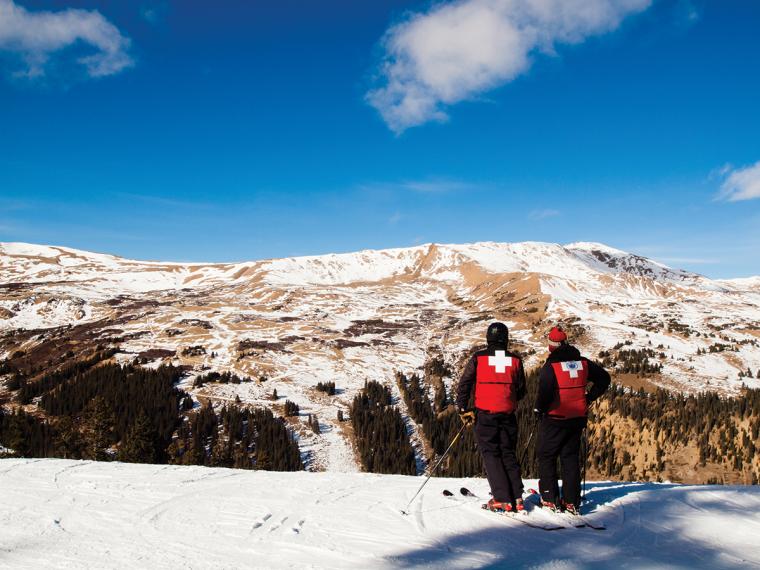

For the last year, event rights holders and venue operators alike have undergone a crash course in medical protocols and have had to rethink how they look at medical support during events. Prior to the pandemic, medical planning seemed haphazard at best at many events.
Eventually, we will get past this pandemic and return to “normal,” but there are important takeaways that can be gleaned from this experience when we evaluate the level of medical support needed at events. At a minimum, rights holders and venue operators should discuss each other’s medical support plans and how they can, and must, work together to provide a safe environment.
Identifying the Needs
To build a proper medical support plan, groups must first have a realistic review of events to identify the needs. Medical support plans, while generated from a core set of principles, will vary from event to event, even at the same venue or by the same rights holder. Every event is unique and these unique characteristics will drive the decision making of the medical support plan.
The key factors in a medical support plan will include the sport being played, age of participants, number of teams in the event, number of fields and layout of the facility, onsite resources from the facility, local resources such as police and fire, proximity to the nearest hospital and many more. Each of these factors will help organizers determine the level and quantity of support needed. For example, an event organizer would surely treat a youth softball tournament drastically differently from an adult rugby tournament.
First Line of Defense
At any sports event, the first line of defense is always going to be the event and venue staff. A key lesson that has come out of the COVID pandemic is the need to train staff in basic medical triage and first aid. COVID has raised the sensitivity of the general public to medical issues, so it is important that event staff has enough knowledge to react to the situation at hand. Event staff should have basic first aid training as well as CPR certification. Anyone who is CPR-certified will attest that the training will emphasize that every second counts when you are providing CPR.
Having a trained staff can be the difference between life and death. A well-trained staff can also expedite the assessment and escalation of an incident when necessary. The venue should also have a plan for potential medical situations. Venue staff should also be trained in basic first aid and have CPR certification. Venues should have AED equipment staged throughout the venue. These systems are a valuable life-saving device and should be incorporated into the design and layout of new facilities. The cost of these devices has decreased over the years and there are several organizations that provide grants to install AEDs at sports venues.
Athletic Trainers
Athletic trainers have become ubiquitous at sporting events. Athletic trainers serve an important function in assessing injuries and providing onsite treatment. Athletic trainers cover numerous areas from advanced first aid, sports medicine and general medical triage. When developing a medical support plan for an event, it is important to not only determine the right number of athletic trainers but also their role during the event. Every event owner should decide where athletic trainers will be stationed.
There are three common setups: a central medical facility, whether a tent or room at the venue, deploying trainers to fields directly, or mobile trainers in vehicles such as golf carts. The deployment decision is based mainly on the layout of the venue and the expected need for trainer services. Deployment plans will always need to be determined on a case-by-case basis. Additionally, event operators need to establish the specific role of the trainers. Large-scale events may need to limit the role of the trainers to only on-field injuries so as to not overwhelm the individual trainers with pre-game and post-game assessments of players.
It is also important to identify the athletic trainers’ role in concussion protocols. Every state has its own laws regarding concussions and the role of athletic trainers in those protocols. Event and venue staff should have a baseline understanding of these concussion protocols to provide any necessary support.
Advanced Medical Support
Depending on the sport and age of participants, advanced medical support may be required. Advanced medical support would include onsite EMT units, physicians and full medical suites with X-ray and ultrasound equipment. Full medical suites would be more common to professional sports or high-level amateur events like Olympic qualifiers. With advanced medical support, like athletic trainers, it is important to define their role. If you have a need to have an EMT unit with an ambulance onsite, it is unlikely you would want them to also be your first aid station. The costs of advanced medical support must also be considered when determining the needs of your event.
Working with Community Assets
It is important for every rights holder to work with the venue to determine what community assets are available when developing the medical support plan. Venues should be able to provide event operators with information such as the closest fire and rescue station, police station, hospital, emergency room and urgent care center. Rights holders or the venue should also reach out to these community resources to alert them to upcoming events. Letting these entities know that there will be an influx of people to the area during an event will help them staff appropriately to support your event.
As with all areas of an event, a little communication goes a long way. You may also find that these entities will provide you additional support that you did not even ask for. It is not unheard of for the local fire department to stage one of its EMS units at the sports venue during the event to help with their response time. You will want to work with these groups on protocols in medical emergencies. If you understand the routes that an EMS unit will take into the park, as well as make them familiar with the park layout for your event, it will speed up response times. You can also work with the local emergency room or urgent care center to help fast track athletes who need care at these facilities.
Create the Plan
Once you have evaluated your event to identify the needs and resources available to you, it is time to draft the medical support plan. Your medical plan should always be documented and distributed to invested parties. You should then conduct staff training on the plan. There is no point in developing the plan if you do not train staff on the plan. Executing the plan should become second nature to staff so ultimately, they do not need to reference the document any longer.
The medical support plan should not just be a list of what assets are available and where they are located. The medical plan needs to include a communication plan, transportation plan, reporting mechanism and follow-up protocols. The last thing that you want to be doing in a medical emergency is looking for a phone number, searching for directions or trying to find the closest emergency room.
Failing to Plan is Planning to Fail
While no one was planning for how to operate events in a pandemic, those event operators and venues that already developed a medical support plan were well ahead of the curve to adjust for the new protocols of the pandemic. Large-scale sports events will return across the country. It is up to rights holders and venues to make sure that we are setting up our future events to succeed. Developing a medical support plan is a key component of that future success. SDM

